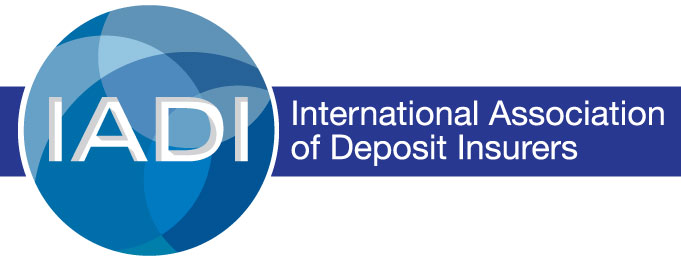From Herstatt Bank to the Present: The Journey of Deposit Insurance and Crisis Management
16 July Accra, Ghana
Eva Hüpkes
IADI Secretary General
I am delighted to be here in Accra to introduce this workshop on expanding the role of deposit insurers in resolution.
Before doing so, let me congratulate Pearl Esua-Mensah and the Ghana Deposit Insurance Corporation on the fifth anniversary of the establishment of the GDIC.
Remarks on deposit insurance and resolution these days often begin with a reference to the 2023 banking turmoil and the lessons we have learned from it.
I would like to remind you of another crisis that occurred half a century ago. Last month marked 50 years since the collapse of Herstatt Bank, which was a bank based in Germany close to my hometown. This event, which took place in June 1974, had significant implications for global markets and banking regulation. The failure caused major disruptions in foreign exchange markets and subsequently contributed to the failure of Franklin National Bank, one of the largest banks in the US at the time. The geopolitical environment was difficult, much like today. An oil embargo in connection with Middle East tension had caused a global energy crisis and precipitated widespread inflation and economic challenges worldwide.
At the international level, the Herstatt failure led to the establishment of the Basel Committee on Banking Supervision as a forum for international cooperation on banking supervisory matters. It also spurred significant efforts to mitigate the so-called ‘Herstatt risk’ through improved risk management and the adoption of payment-versus-payment (PvP) mechanisms for exchanging currencies. Yet, another lesser-known effect relates to deposit insurance and crisis management.
The Herstatt failure was the most significant bank failure in post-war Germany. This event led German banks to formalise a private deposit protection scheme, which came into place in November 1975. Other European countries, including Belgium, Austria, and France, followed suit, and adopted deposit insurance schemes in the following years. The regimes were quite distinct, and a process began at EU-level of harmonising and establishing explicit deposit insurance schemes in 1994 with the introduction of the European Union Directive on Deposit Guarantee Schemes.
In the late 90s, the Asian financial crisis further underscored the importance of deposit insurance. In the absence of any deposit insurance arrangements, several countries had issued blanket guarantees which incurred high costs that were ultimately borne by the taxpayers.
This led the Financial Stability Forum (FSF), the predecessor of the Financial Stability Board, to launch a process for developing international guidance on deposit insurance. The Working Group that was established for this purpose developed such guidance and, in its final report of November 2001, called for an agreement on international principles for effective deposit insurance systems. Shortly thereafter, in May 2002, the International Association of Deposit Insurers (IADI) was founded.
It took another crisis to serve as a catalyst for further progress. In July 2008, the Basel Committee on Banking Supervision (BCBS) and IADI collaborated to develop a first set of the Core Principles for Effective Deposit Insurance Systems (Core Principles), which were finalised in 2009. In parallel, the BCBS also developed the recommendations on cross-border bank resolution,1 which would later form the basis for the FSB Key Attributes of Effective Resolution Regimes for Financial Institutions that became the umbrella standard for resolution regimes covering banks as well as any other financial institutions that could be systemic in failure. Thus, from the very beginning, and in recognition of that deposit insurance and resolution are two sides of the same coin, the development of the international deposit insurance and of the resolution standard was closely coordinated.
To promote the effective implementation of the Core Principles, the FSB in 2011 conducted a peer review of deposit insurance systems using the Core Principles as a benchmark. While many systems were broadly consistent with the Core Principles, there were areas that required further attention and others where additional guidance was necessary. The outcomes of the peer review as well as recent developments (which included the revision of the deposit insurance directive in the EU) informed the first revision of the Core Principles in 2014.
Now, ten years later, we are seeing rapid structural changes in banking systems and last year experienced another crisis. A second review of the Core Principles is therefore timely. This review will be informed by the lessons from the 2023 banking turmoil,2 which stressed the importance of a holistic approach to the financial safety net operation and of the need for deposit insurance and resolution mechanisms working together in a cooperative manner to minimize resolution costs, protect depositors, and maintain financial stability.
Consistent with the Key Attribute standard, a sound institutional framework for crisis management, recovery, and resolution, should provide the relevant authorities with a broad range of powers to resolve a bank that has no reasonable prospect of becoming viable again. More specifically, to protect insured depositors and safeguard financial stability authorities should be able to exercise their powers to achieve one of two outcomes:
- either to maintain the continuity of critical functions, such as e.g. the deposit taking function, for example by way of a sale or transfer of the shares in the bank or of all or parts of the bank’s business to a third party, either directly or through a bridge institution, and/or an officially mandated creditor-financed recapitalisation; or
- to effect the orderly closure and wind-down of all or parts of a bank’s operations and pay out insured depositors promptly.
Continuity scenarios have traditionally been associated with larger banks and wind-down and deposit insurance pay-out scenarios with smaller bank failures. Recent experiences have shown that continuity options have increasingly become the preferred tool for smaller non-systemic banks as well. Even if banks are not systemic, preserving their deposit books and at least some of their services rather than by liquidation and payout will be less disruptive and more supportive of financial stability. Even with technological development speeding up payouts, there is a question as to whether the experience will be as seamless as a transfer of deposits. The public’s expectations given technological change are increasingly pointing to resolution and continuity in access to deposits as the preferred approach to managing the failure of banks.
Deposit insurance has a role in both continuity and wind-down resolution scenarios. Deposit insurance funds can be used to help implement continuity scenarios when the loss absorbency in a failed bank is limited – for example, because deposits form a significant proportion of its liabilities.
However, the use of deposit insurance fund resources for non-pay out resolutions must be guided by the primary function of the deposit insurer – to protect insured deposits and support financial stability – and thus, be subject to appropriate safeguards and underpinned by an effective governance framework.
Safeguards may take the form of financial caps or a least cost test, which requires the deposit insurer to select, as resolution authority, the lowest cost option from a range of possible measures that includes liquidation and payout.
For example, the US framework requires the FDIC to consider bids received from potential acquirers to compare the costs to the deposit insurance fund of any bank resolution, with the costs it would incur through liquidating the failing bank in its capacity as receiver and paying off insured depositors up to the current insured amount, net of its expected recoveries as subrogee to the claims of those depositors. Under the EU framework, the safeguard takes the form of a financial cap, so the contribution of the deposit insurer to funding any non-payout resolution measure must not exceed the cost of payout of the covered deposits in liquidation, net of recoveries.
Calculating the costs of any liquidation counterfactual is likely to be challenging and impacted by many factors, such as market conditions, the length of the liquidation process, and many other factors, including the creditor hierarchy. It is therefore important that the safeguards for the use of deposit insurance resources do not operate in isolation and are embedded in an effective governance framework. This then ensures the close involvement early on of all safety net participants in the decision-making process regarding the choice of the optimal crisis management and resolution strategy to make sure that the perspectives from all safety net participants are considered. Putting in place such governance arrangements is an important lesson from the most recent turmoil.
Let me conclude by thanking Pearl and her team for their generous hospitality and for starting off the day here in Accra with such vibrant Ghanaian dance performance. Just like Ghanaian dance, which involves individuals coming together to coordinate their movements with each other and with the rhythm of the music in order to create such a cohesive and visually appealing performance, effective safety net coordination require the individual safety authorities with their distinct statutory mandates, skills and resources to align their efforts towards the shared objective of protecting depositors and maintaining financial stability.
Crises are catalysts for change and reform. The Herstatt crisis, the Asian financial crises, the global financial crisis, and last year’s banking turmoil, all served as wake-up calls for necessary reform and transformation of bank failure resolution and deposit insurance systems. Yet, they also reminded us that lessons can be quickly forgotten and need to be relearnt. The primary goal of the workshop today, as well as other events organised by IADI, is to facilitate the sharing and reinforcement of valuable lessons learned from past crises. I wish you all a successful workshop!

